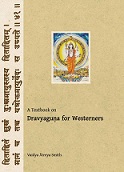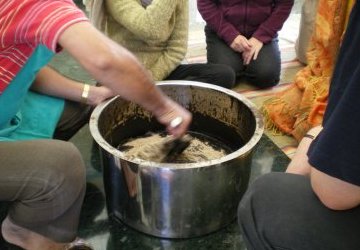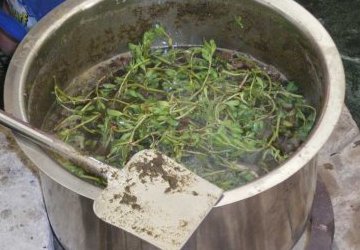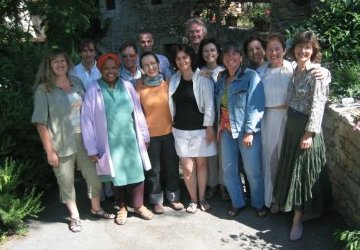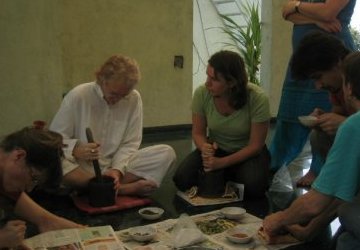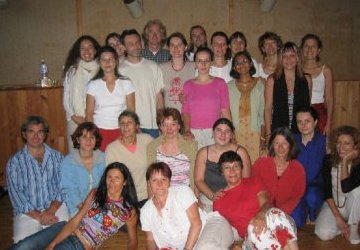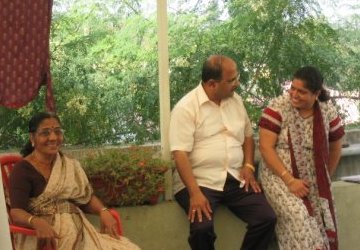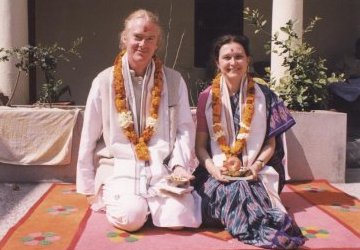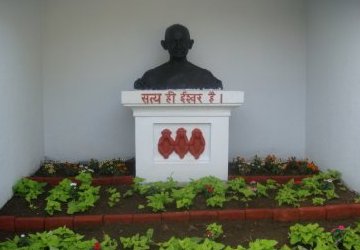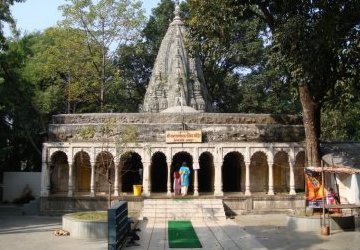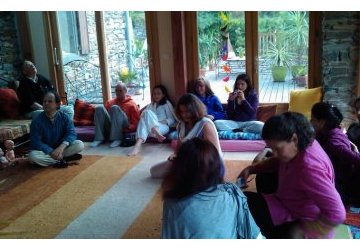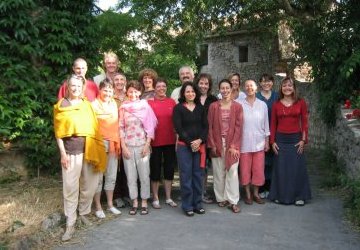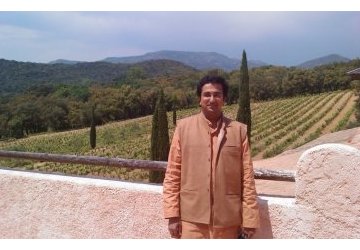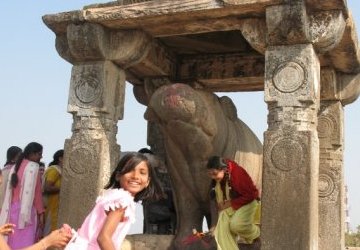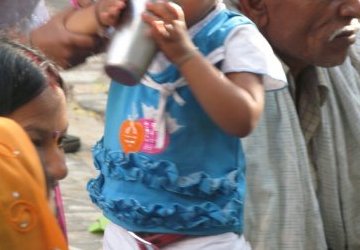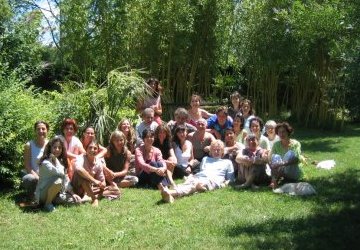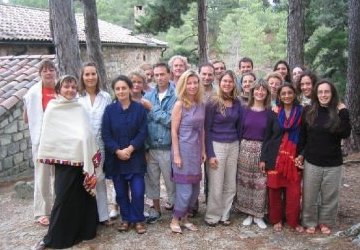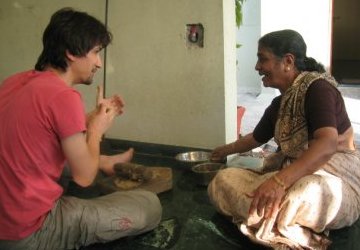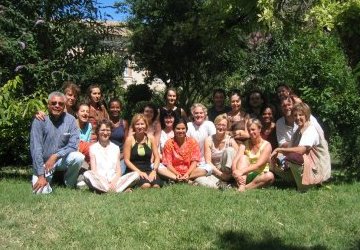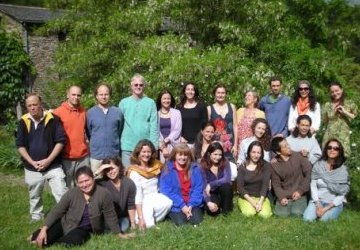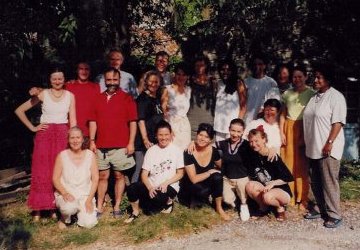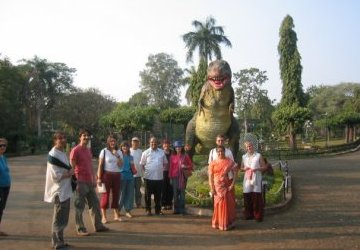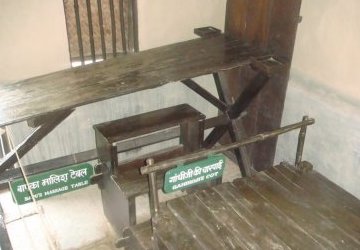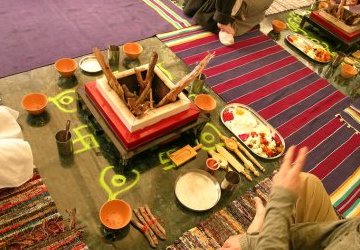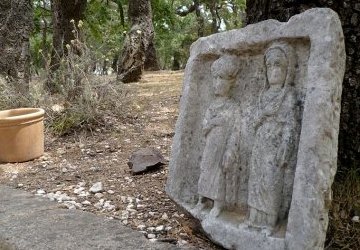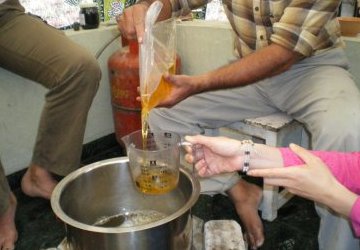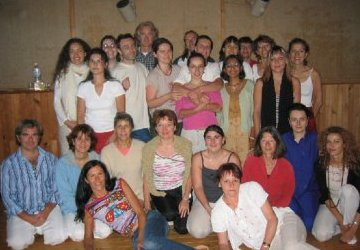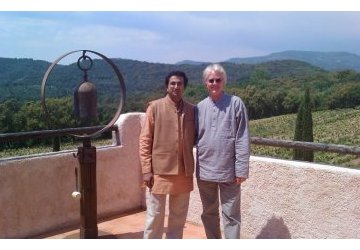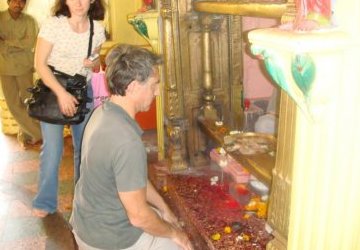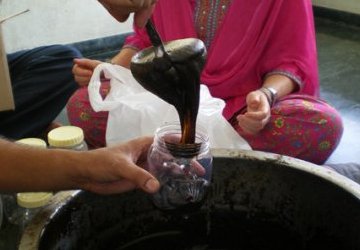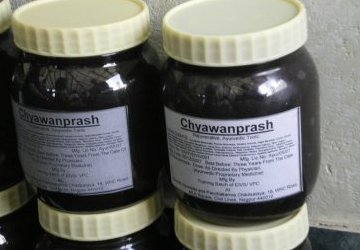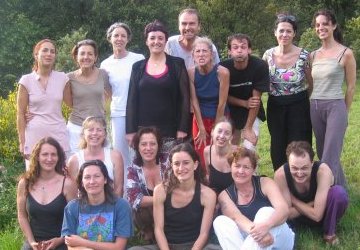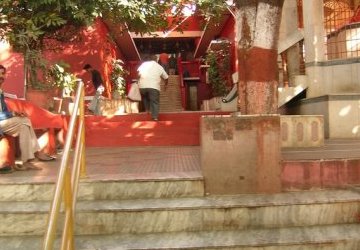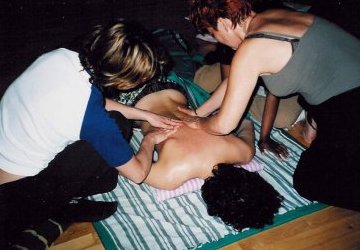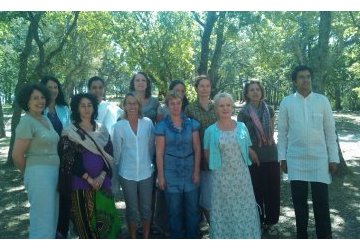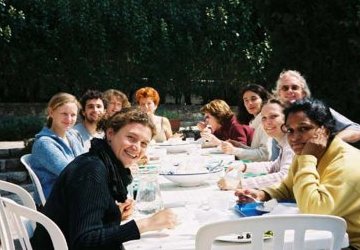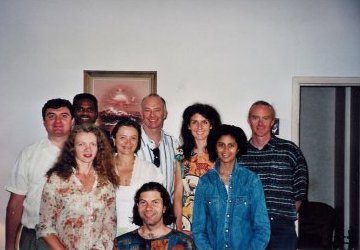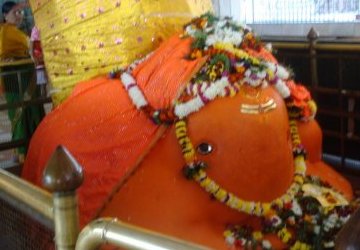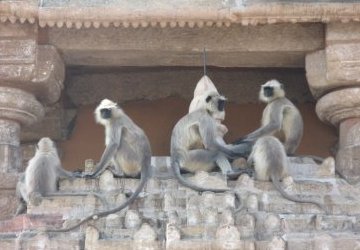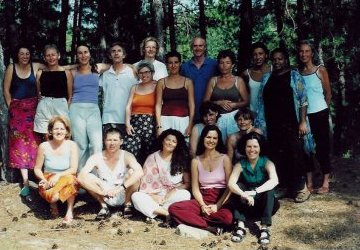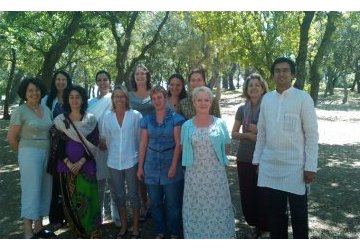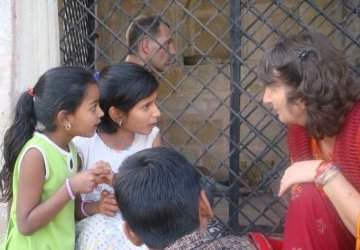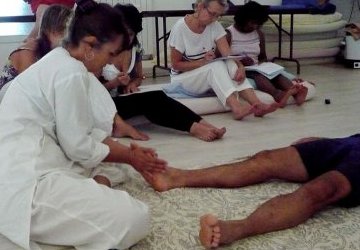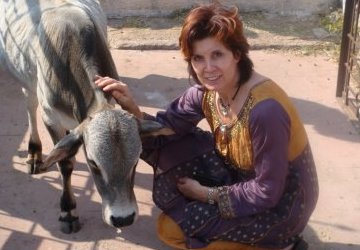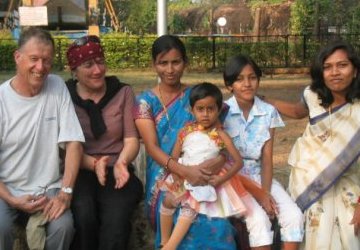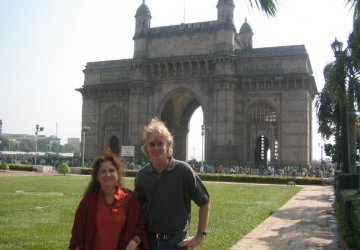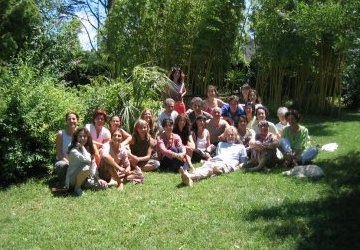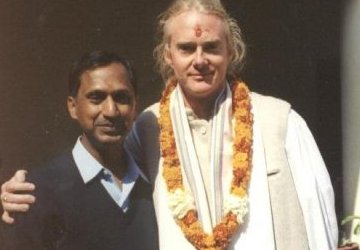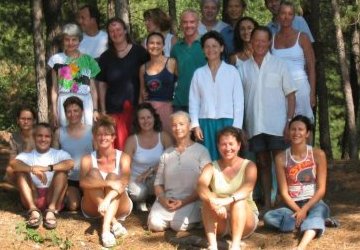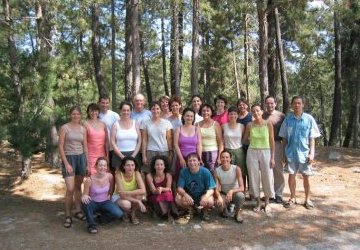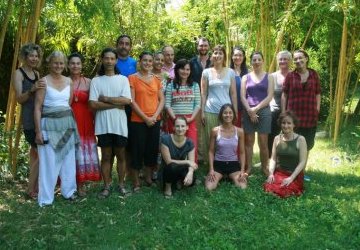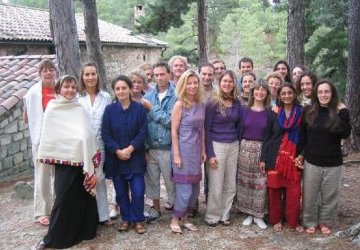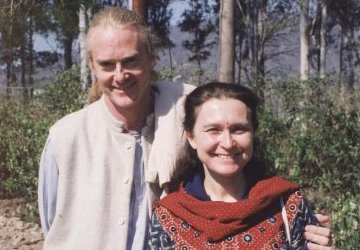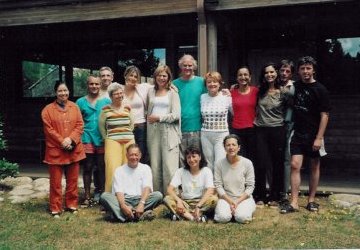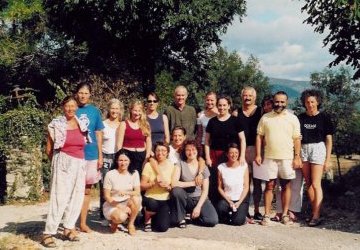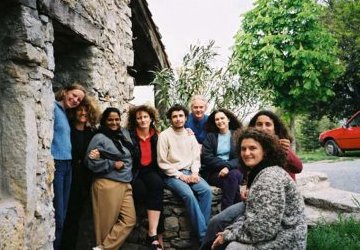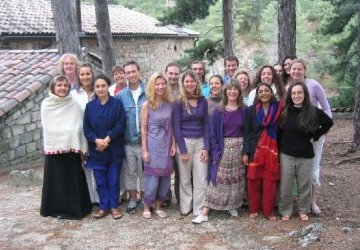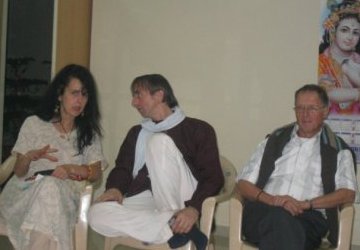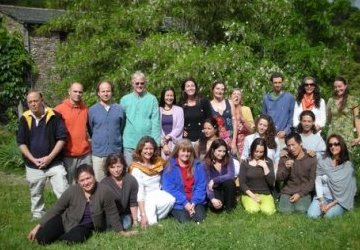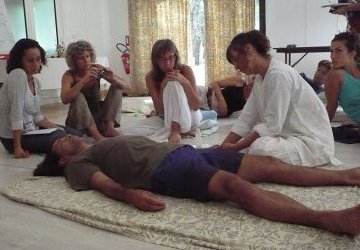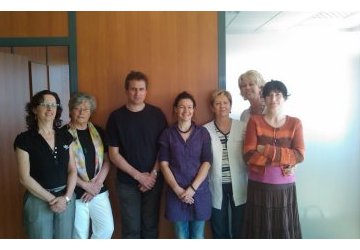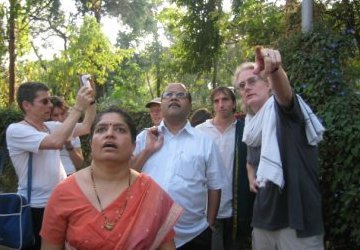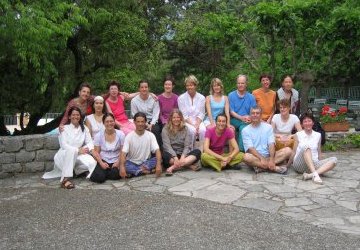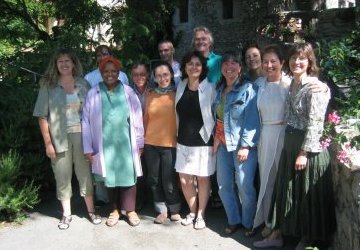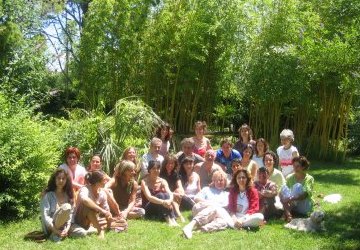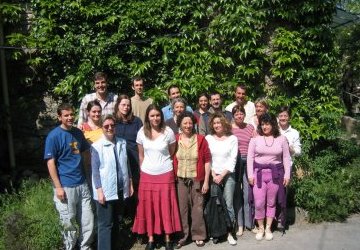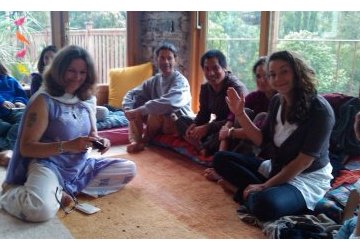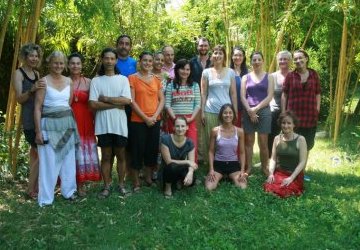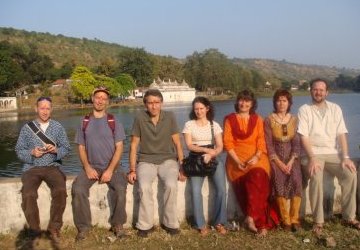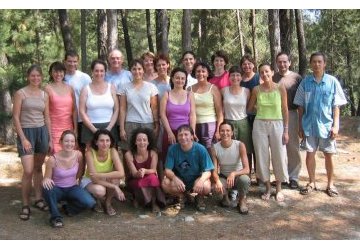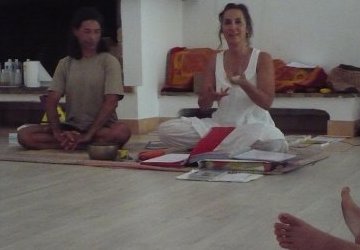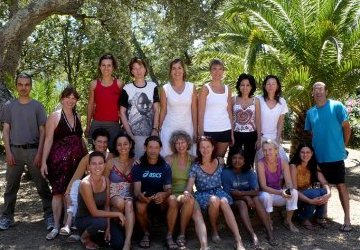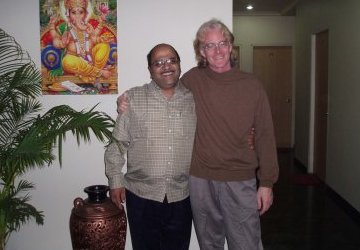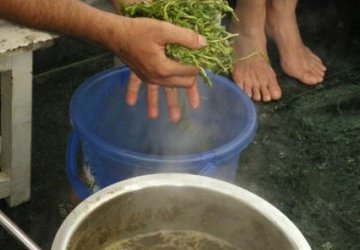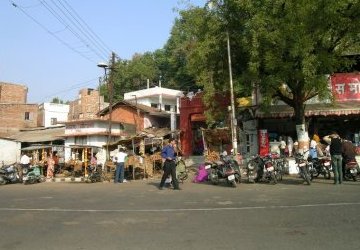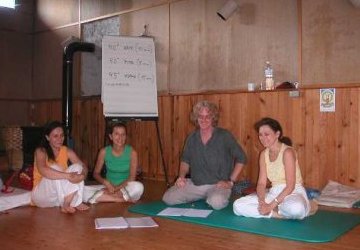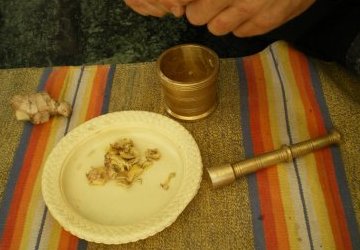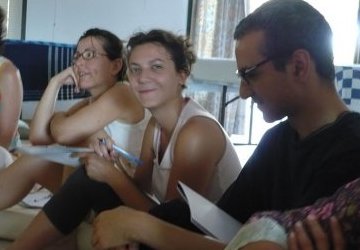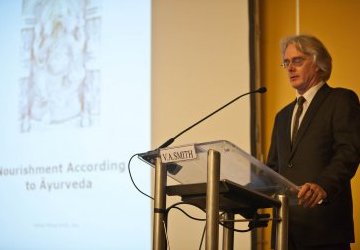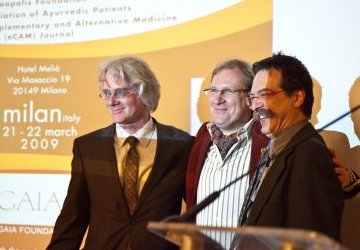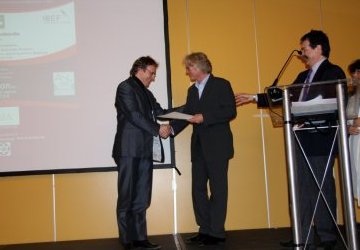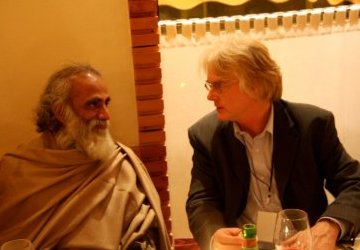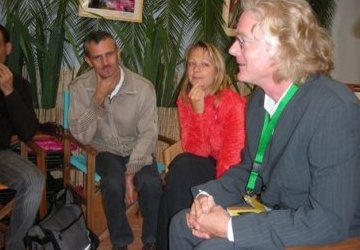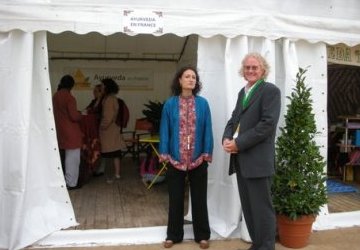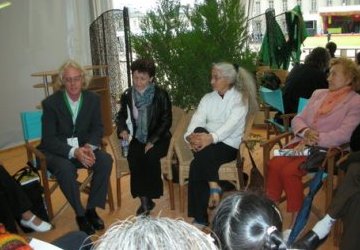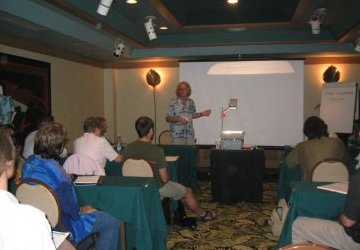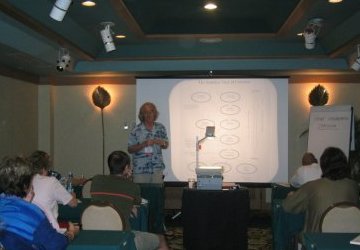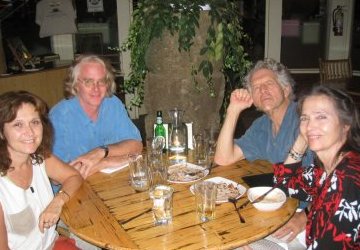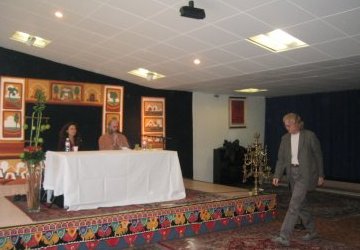Dravyaguna for Westerners (Vol 4)
Vaidya Atreya Smith, BSc., director of the European Institute of Vedic Studies, has created a text book on Ayurvedic Herbal Therapies for health practitioners and schools throughout the world.
This text book is the result of 13 years of clinical research and 10 years of teaching experience in Ayurvedic herbal therapies. Atreya has written this text book to help Western people truly understand the Ayurvedic method of using herbs. Most people in the USA and Europe simply use Indian herbs according to symptoms and declare that they are “practicing Ayurveda”. Since 1998 Atreya has been teaching the correct way to use herbs and other substances to his students in France, Switzerland and the United Kingdom. The textbook includes 115 herbal monographs that explain in detail the chosen herbs according to Ayurveda. Additionally there are 45 herbal formulas indicated by disorders – each adjusted for vata, pitta, or kapha causes of the disorder.
The true Ayurvedic approach to using herbs lies in the capacity to diagnosis which dosha is causing the problem. Then the astute practitioner gives herbs which:
– reduce the dosha causing the disorder
– that also work on the disorder specifically
– that also respect the Prakriti of the patient
This course explains in detail the Ayurvedic system, vision, method and application in sixty pages. This followed by 115 monographs – 100 of which are Western herbs – and then index and glossaries for a total of over 190 pages of A4 format (A4 size is roughly the same size as ‘letter’ in the US, it is a little less wide, but longer).
This book does not contain the chemical “active ingredients” of herbs because the goal of Ayurveda is to correct the conscious, intelligent function of the body and mind. Chemicals are also attributes of any substance; however, they are not dynamic in an isolated state. Each Dravya or substance in nature has its own unique quality and group of attributes. Isolating one or two of these attributes, or chemicals, is very much like removing the liver from the body to obtain more enzymes. The “donor” of the liver of course dies and its unique grouping of attributes also is dissipated at death along with consciousness. When we isolate one part of an herb or mineral we effectively “kill” the greater capacity of the substance to work directly on the conscious, intelligent principle of our body (Prāṇa) as processing the Dravya diffuses the binding consciousness and renders it ineffective in terms of Prāṇic function.
This is perhaps the most fundamental difference between the “Ayurvedic model” and the modern “biochemical model” of using herbs. The biochemical model must be used subserviently to the Ayurvedic model for numerous reasons. The most important reason is that the fundamental vision of life as a conscious dynamic force permeates all creation. Additionally, there are too many ingredients, both passive and active, in botanical’s to warrant an isolative approach as their interactions and relationships cannot be studied with the biochemical model – there are simply too many possibilities present at once to use this narrow methodology of classification.
The whole text has been revised and corrected by my teacher of Dravyaguna, Prof. K.C. Chunekar, currently India’s greatest living expert on the botanical identification of Ayurvedic medicinal plants. Proffessor Chunekar has been kind enough to write the foreword to this course book. This textbook has been in use since 2001 in various forms for my students. However, this is the first time the full, corrected and revised edition is now available.
Textbook
– 367 pages, "Letter" format (slightly shorter & wider than A4 format)
– 115 herbal photos in Color
– 7 indexes
To study herbal medicine according to Ayurveda with Atreya Smith click here!
Table of Contents
Foreword
Introduction
Why Use the Āyurvedic Approach to Herbal Therapy?
Āyurvedic Anatomy and Terminology
Dravyaguṇaśāstra
How to use the Herbs
a) Methods of preparation b) How to make a formula c) Dosage d) Anupānas
Formulas Listed by Disorder
How to Use the Herb Listings
Materia Medica
a) 115 Herbs listed alphabetically by Latin names
Appendix
a) Exams
b) Bibliography
c) Glossary of Sanskrit Medical Terms
d) Glossary of English Medical Terms
e) Herbal Energy Charts
f) Index of Common Name Synonyms
g) Index of Disorders
h) Index by Therapeutic Actions
i) Plant Index by: Common Names, Latin Names, Sanskrit Names
j) General Index
Course Costs
This course will be offered in September each year as part of our E-Learning programs. For full information click here.
Buy only the book by clicking here! This is the revised 2nd edition with Color photos!
Foreword to the Text book:
Dravyaguṇa for Westerners
By Professor K. C. Chunekar
It is a great honour to have the opportunity to write a foreword to the book, ‘A Text on Dravyaguṇa for Westerners’ by my learned friend Vaidya Atreya Smith of France. It is a unique book on this subject.
Ayurveda has gained an International recognition as an oldest scientific method of treatment mostly based on herbs. It is not only an Alternative system of medicine but has got a firm scientific base of pharmacology of each drug. According to Ayurveda the effect of any drug is based on its Rasa (tastes), Guna (properties or attributes as mentioned by the Author), Virya (powerful attributes like heating/cooling) and Vipaka (the therapeutic effect after the substance has been digested and assimilated. These factors balance the Vata, Pitta and Kapha, the imbalance of which is disease.
Ayurvedic Pharmacopoeia includes about 400 plants utilized in various classical formulations though the tribal and other communities of India are using about 8 thousand species out of millions of herbs growing in the country. Due to enormous demand of herbs many of the species are becoming endangered. So, we have been considering seriously to include all these available species being utilized in different parts of our country in our Pharmacopoeia after providing them the Rasa, Guna, etc. to have a sound basis for their official utilization on Ayurvedic principles. Thousands of years ago, Maharshi Charaka has clearly said that there is no substance in the world which cannot be used as medicine if it is used rationally:
“Anenopadeshena naanaushadhibhutam jagati kinchiddravyamupalabhyate taam taam yuktimartham cha tamabhipretya” (Su. 26.12).
So, there is no prohibition to include such useful plants in our Materia Medica after proper scrutiny and by providing the Rasa, Guna, etc. to such valuable herbs. Bravamisra (16th Cent.) has included Paaraseeka Yawaani (Hyocyamus sp.), Dvipaantara Vacaa (Smilax china) and many others have enriched our Materia Medica from time to time.
Vaidya Atreya Smith has been working since long on these aspects particularly for the plants growing in France and also on important plants of the world being utilized by herbalists. I am very happy that Vaidya Atreya has evolved the Ayurvedic pharmacological principles for these herbs. This is a new directive shown by him for the Herbalists all over the world for further research. I congratulate him for his venture on writing a book for Westerners. He has very efficiently described all the related subject in a most simple and comprehensive manner. The book will not be only very useful for Ayurvedic Practitioners and Herbalists all over the world but also to Practitioners of Ayurveda in India. This will also give an impetus to develop Indian Materia Medica, the need of the era.
I wish, Vaidya Atreya will publish many more books on Ayurveda in future.
Rama-navami, the 8th April, 2006
Prof. K. C. Chunekar, A.M.S., Ph D., F.N.A.A.
Acharya Guru in Dravyaguna, National Academy of Ayurveda, Ministry of Heath & F.W., Govt. of India, New Delhi
Chairman, Sub Comm., Ayur. Pharmacopoeia, Ministry of Heath & F.W., Govt. of India, New Delhi
Member Ayurvedic, Siddha & Unani Drugs, Technical Advisory Board, Govt. of India
Ex. Head, Dept. of Dravyaguna, Institute of Medical Sciences, B.H.U., Varanasi
Series: Ayurvedic Medicine for Westerners
Paperback: 372 pages
Printed in color
ISBN-10: 1491098066
ISBN-13: 978-1491098066
Product Dimensions: 8.5 x 0.6 x 11 inches
Shipping Weight: 2.3 pounds
Copyright © 2019 EIVS GmbH
Ayurvedic Medicine for Westerners, textbooks for schools on Ayurveda

